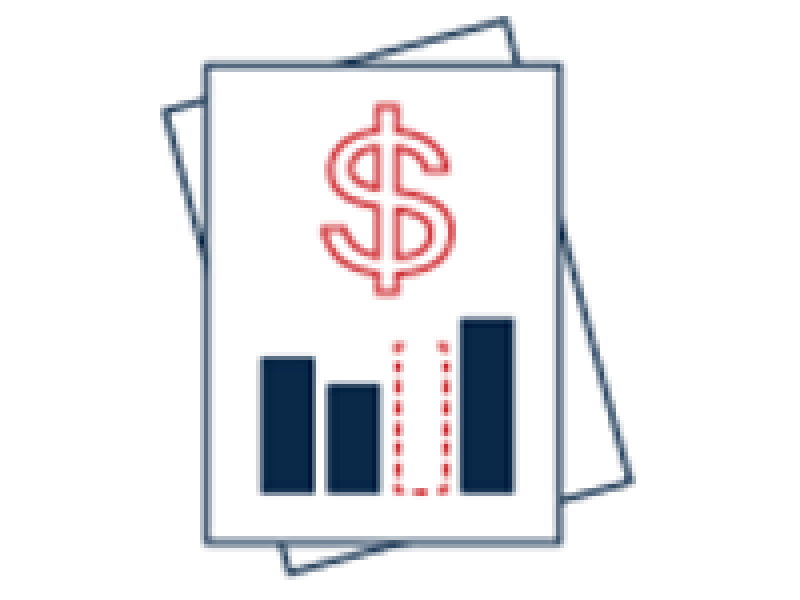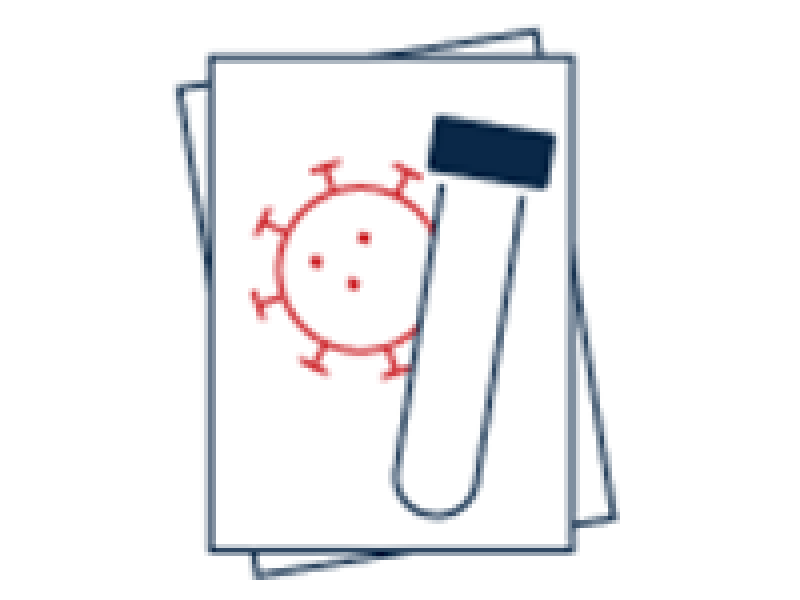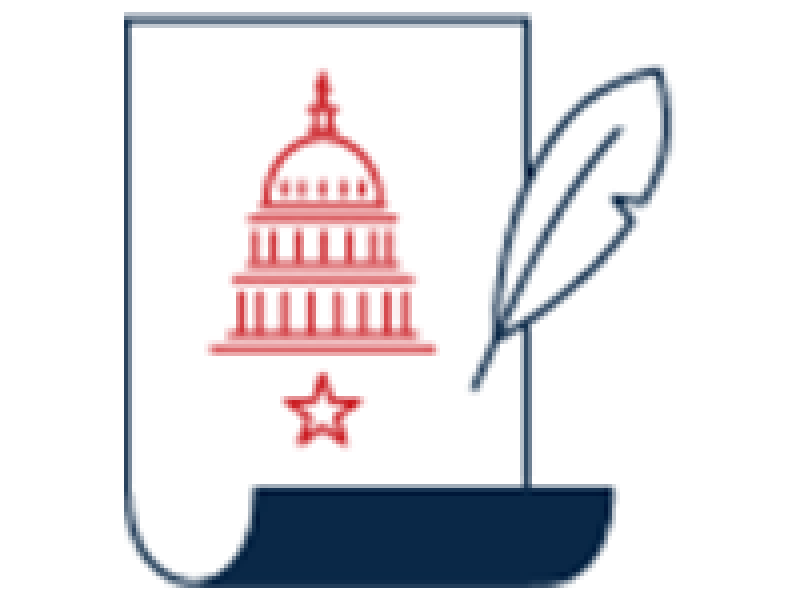Report to Congress: October 2020 through March 2021
Message from our Chair
I am pleased to present the Pandemic Response Accountability Committee’s (PRAC) second Semiannual Report to Congress, covering the period from October 1, 2020, through March 31, 2021. One year has passed since the Coronavirus Aid, Relief, and Economic Security (CARES) Act was enacted, creating the PRAC to provide oversight of multiple pandemic response programs to ensure taxpayer dollars are used effectively in response to this unprecedented health and economic crisis.
Enactment of the $1.9 trillion American Rescue Plan (ARP) in March 2021 adds to the independent oversight responsibilities of the PRAC and its member Inspectors General (IGs). We are committed to promoting transparency and conducting aggressive oversight of the more than $5 trillion in pandemic response funding included in the ARP, the CARES Act, and other pandemic relief legislation. Independent oversight of relief spending is essential to identify fraud, waste, and abuse of funds by bad actors, and to also ensure the relief reaches those individuals and businesses it was intended to help and has the desired impact, whether that be emergency rental assistance, unemployment benefits, or a small business loan.
To put it in perspective, the more than $5 trillion in relief provided to address the pandemic and its health and economic impact to Americans is more than the federal government’s total spending in 2019 for all discretionary, mandatory, and interest on the debt. A program of this magnitude takes a monumental and whole-of-government effort to execute. The speed at which money has been disbursed and the sheer amount of funding put the funds at high risk of fraud and misuse, making the work of oversight entities like the PRAC and IGs essential to a successful national recovery.
Over the past six months, the PRAC has worked with member IGs to conduct oversight that seeks to identify and mitigate programmatic and systemic risks, and to develop recommendations for program improvements, refer matters for criminal and civil investigations, and identify misspent funds for potential recovery. The 22 PRAC IGs, as well as other IGs whose agencies received emergency pandemic funding, issued 103 reports between October 1, 2020, and March 31, 2021, related to the federal pandemic response. We have provided the public with accessible, timely, accurate, and comprehensive data on relief spending for programs such as the Paycheck Protection Program (PPP) and Coronavirus Relief Fund (CRF) via our website, PandemicOversight.gov. Over the past year, the PRAC has served as an effective forum for coordination and collaboration among Offices of Inspectors General (OIGs) and other oversight partners, including the Government Accountability Office (GAO) and state and local auditors to minimize duplication of effort and support high-impact oversight of covered funds and the coronavirus response.
In January 2021, the PRAC stood up a Fraud Task Force to serve as a coordination tool to assist OIGs in their investigation of pandemic fraud; to serve as a coordinating body with Department of Justice prosecutors, the Federal Bureau of Investigation, and other federal law enforcement agencies; and to enable OIGs to tap into criminal investigators and analysts from across the OIG community to help handle pandemic fraud cases.
Fulfilling the PRAC’s mission of rooting out waste, fraud, and abuse in novel coronavirus 2019 (COVID-19) response spending requires advanced technological tools, including the use of data analytics to identify fraudulent payments before they are made, to strengthen compliance and audit efforts, and support efforts to recover ill-gotten gains. To that end, the PRAC has established the Pandemic Analytics Center of Excellence (PACE) to: (1) conduct data analysis and visualization of pandemic response funds; (2) provide fraud-fighting tools and central shared analytic services to the IG community; (3) enable the broad sharing of data, analytics, and leading practices across the oversight and law enforcement community; and (4) assist investigations and audits of pandemic relief programs with expanded data for open source investigative intelligence.
The PRAC remains committed to our mission of providing transparency and deep insights about how pandemic relief dollars have been spent and whether those funds reached their intended recipients. We have identified gaps in program-level data and are working closely with the Office of Management and Budget and our IG partners to address gaps and improve the data quality. It is critical that the PRAC and individual OIGs inform Congress and the American public about whether these massive financial investments have helped communities, small and large businesses, state, local, and Tribal governments, and our public health system recover from the effects of the virus. One of our primary roles is to provide an objective, fact-based answer to this question: “Has this level of pandemic spending been effective, and if not, what needs to change?”
We hope you find this semiannual report informative.
The Honorable Michael E. Horowitz
Chair, PRAC
Inspector General, U.S. Department of Justice
Highlights Timeline
To see the entire timeline, view the Highlights section of the report.

November 16, 2020
Agile Products Toolkit
This toolkit identifies and defines four primary situations where your office may want to consider using an agile product. Consider these guidelines, best practices, and lessons learned while conducting, completing, and issuing reports or other work products.

November 19, 2020
MITRE Report on Gaps in Pandemic Spending
Read this commissioned study that identifies gaps in federal data sources and how we can close them to improve the quality of the information we provide to the public.

November & December 2020 / February 2021
Data Release
PRAC released Coronavirus Relief Fund (CRF) data in November 2020, Paycheck Protection Program data in December 2020, and the second round of CRF data in February 2021.

December 27, 2020
$900B Supplemental Relief Funds Enacted
Congress enacted the Coronavirus Response and Relief Supplemental Appropriations Act, adding $900B in funding and programs to the PRAC's oversight responsibilities. See a breakdown of how the funds are distributed.

January 14, 2021
COVID-19 Testing Report
This report examines COVID-19 testing efforts for six federal health care programs during the first seven months following the declaration of a public health emergency in the United States.

February 3, 2021
Top Pandemic Challenges Update
In this update to the Top Challenges report issued in June 2020, the PRAC identified four major challenges in addition to the four existing challenges facing federal agencies.

March 11, 2021
$1.9T American Rescue Plan Act of 2021 Enacted
As PRAC Chair, Michael E. Horowitz, stated in this press release, the enactment of the American Rescue Plan (ARP) adds to the important independent oversight responsibilities of the PRAC and its member Inspectors General. See a breakdown of ARP funding here.

March 25, 2021
Year One Retrospective Event
We hosted a virtual event on the one-year anniversary of the CARES Act and of pandemic response, featuring panels on the economic impact of the $5T in pandemic funding and the successes and challenges in overseeing the spending.
Accomplishments
The PRAC was established to serve the American public by promoting transparency and facilitating coordinated oversight of the Federal Government’s COVID-19 pandemic response and associated spending with the goal to detect fraud, waste, abuse, and mismanagement and to identify and mitigate major risks that cross program and agency boundaries. Our goal is to serve as the eyes and ears of the American public, monitoring the government’s pandemic response spending and reporting accessible, timely, accurate, comprehensive data that can be translated into actionable insights. The PRAC’s Strategic Plan for 2020 through 2025 identifies the following four goals to carry out PRAC’s mission and vision. View the report to read a full description and get more details on all of the PRAC's accomplishments.
Goal One: Promote Transparency
Provide the Public with Timely Data and Information on Covered Funds and the Coronavirus Response
The PRAC fosters transparency of more than $5 trillion in federal pandemic response spending through our robust, publicly accessible website, PandemicOversight.gov. The website includes important information about the PRAC and a wide range of data related to how emergency pandemic funds have been spent.
We use a variety of communications methods and platforms, from social media to direct email, to increase the visibility of our efforts, the work and recommendations of pandemic IGs and other oversight partners, and to encourage the public to provide feedback on the use or misuse of covered funds. We regularly issue press releases and alerts when new datasets are added to PandemicOversight.gov. We maintain an active presence on social media, at the Twitter handle @COVID_Oversight.
Goal Two: Promote Coordinated, Comprehensive Oversight
Facilitate Exceptional Coordination and Collaboration to Ensure High-Impact Results
IGs have a rich history of collaboration and coordination within the community and with their federal, state, and local partners in pursuit of effective oversight. The PRAC provides an effective forum for IGs and other oversight partners, including GAO and state and local auditors, evaluators, and inspectors, to minimize duplication of effort and support high-impact oversight of covered funds and the pandemic response. The PRAC established six subcommittees—chaired by Committee members—to share, through formalized coordination, ongoing oversight and accountability efforts, best practices, and lessons learned. The PRAC also added a Data Sharing issue group to the other three groups already established to address specific areas of concern during the pandemic.
Foster Sound Stewardship of Covered Funds and Programs
Efficient and effective management and administration of taxpayer-funded programs are essential to ensure that coronavirus response programs achieve their intended purposes and provide relief to intended individuals and entities. To address this, the PRAC issued two reports and has four ongoing projects.
Ensure efficient sharing of Data, Analytics, and Other Information
The PRAC has established the Pandemic Analytics Center of Excellence (PACE). The PRAC will use its authorities to provide, directly or in partnership with IGs that have existing data capabilities, a modern infrastructure to allow the efficient sharing of timely, relevant, actionable data among IGs and the broader oversight community.
Goal Three: Prevent and Detect Fraud, Waste, Abuse, and Mismanagement
Mitigate Major Risks That Cut Across Program and Agency Boundaries
The PRAC works with federal OIGs and other oversight partners to identify major crosscutting risks by using data analytics and risk assessments. Such risks may include criminal fraud schemes, internal control weaknesses with the disbursement and accounting of covered funds, and deficiencies with coordination across agencies and programs.
Hold Wrongdoers Accountable
The PRAC supports law enforcement in pursuing fraud investigations and criminal enforcement. To this end, the PRAC established the PRAC Fraud Task Force to:
- serve as a deconfliction and coordination body;
- assist OIGs in their investigative efforts;
- serve as a coordinating body with DOJ prosecutors, the Federal Bureau of Investigation, and other federal law enforcement agencies; and
- forge a path for OIGs to tap into available criminal investigators and analysts from across the OIG community when handling pandemic fraud cases.
Further, the PRAC will provide contract and staff support to the Fraud Task Force, as well as assist OIGs with pursuing administrative remedies such as suspension and debarment.
Goal Four: Ensure Effective and Efficient PRAC Operations
Fulfill Statutory Responsibilities
We have utilized our budget to hire and train staff, continue to evolve our website, and conduct Committee operations. In its first year, the PRAC continues to evaluate the needs of the Committee to ensure our workforce can fulfill our responsibilities. The PRAC may also use funds to support relevant oversight duties of IGs and to engage contractors to conduct audits or reviews.
Support the Independent Oversight of Inspectors General
The PRAC uses leading tools and practices to support IGs. The PRAC has established the PACE and with it has begun developing a data warehouse and an analytics capability to provide IGs with accessible data, tools, infrastructure, data analytics, and other support to help them conduct vigorous pandemic response oversight, including oversight of crosscutting vulnerabilities.
Build a Diverse Team of Innovative Thought Leaders
We encourage creative and practical problem-solving and insightful thought leadership. We also foster collaborative professional relationships. Each of our lines of business developed a roadmap outlining their visions for the next five years. Supporting the roadmap, we have continued to expand our team with a mix of thought leaders from the federal government, the OIG community, and private sector. To recruit and retain the best candidates, provide a positive work environment, and mitigate the risk of current and future pandemic-related workplace disruptions, the PRAC functions as a distributed workforce in a virtual workplace with a small physical footprint in Washington, DC.
Investigations and Oversight Reports
Holding Wrongdoers Accountable Through Investigations
A key role of OIGs is to support law enforcement in pursuing fraud investigations and criminal enforcement. A total of 15 OIGs have publicly reported investigations, indictments/ complaints, arrests, and/or convictions from October 1, 2020, through March 31, 2021, related to the Federal Government’s COVID-19 pandemic response. The following tables provide the total number of accountability actions organized by agency and highlights cases categorized by criminal activity. View the full report for more detailed descriptions of the information provided here.
Percentage of Investigative Results by Criminal Activity from October 1, 2020 through March 31, 2021
| Program | Indictments/Criminal Complaints | Arrests | Convictions |
|---|---|---|---|
| Paycheck Protection Program/Economic Injury Disaster Loan | 55% | 37% | 63% |
| Pandemic Unemployment | 40% | 57% | 30% |
| Provider Relief Fund | 1% | 1% | |
| Other | 1% | 2% | 3% |
| Medicare Fraud | 1% | 2% | |
| Price Gouging/Hoarding | 1% | 1% | 1% |
| Personal Protective Equipment Theft | 1% | 1% | 2% |
| Coronavirus Relief Fund | 1% | 1% | 1% |
Investigative Results from October 1, 2020 through March 31, 2021
| Agency | Indictments/Criminal Complaints | Arrests | Convictions |
|---|---|---|---|
| TOTAL | 431 | 308 | 98 |
| AmeriCorps | 2 | 1 | |
| Department of Defense/Defense Criminal Investigative Service | 2 | 2 | 3 |
| Department of Education | 1 | 1 | |
| Department of Health and Human Services | 7 | 7 | |
| Department of Homeland Security | 2 | 2 | 1 |
| Department of Labor | 173 | 173 | 29 |
| Federal Deposit Insurance Corporation | 48 | 21 | 16 |
| Federal Housing Finance Agency | 23 | 15 | 3 |
| Federal Reserve Board | 26 | 17 | 4 |
| Small Business Administration | 110 | 54 | 26 |
| Social Security Administration | 5 | 5 | 1 |
| Treasury Inspector General for Tax Administration | 23 | 2 | 12 |
| U.S. Postal Service | 3 | 3 | |
| U.S. Agency for International Development | 2 | 2 |
Insights Through Oversight Reports
In the time period covered by this report, 27 OIGs issued 103 oversight reports related to the Federal Government’s COVID-19 pandemic response. These reports generally aligned with the most common areas of concern the PRAC identified in its top challenges report and informed the addition of four new challenges in February 2021. OIGs continue to look for new ways to conduct their work and coordinate across agency boundaries—such as through the issuance of the PRAC’s COVID-19 Testing data brief in January 2021. OIGs have also expanded their use of agile principles to issue oversight reports related to pandemic-response funds and programs a timely and responsive manner. This table outlines the total number of issued reports for each top challenge area and presents summaries of key reports. For a complete list and summaries of all oversight reports issued, see “Appendix B” on page 37 of the report.
Oversight Reports from October 1, 2020 through March 31, 2021
| Office of Inspector General | Report Count |
|---|---|
| Department of Commerce | 1 |
| Department of Defense | 17 |
| Department of the Interior | 9 |
| Department of Education | 2 |
| Department of Health and Human Services | 5 |
| Department of Homeland Security | 2 |
| Department of Housing and Urban Development | 5 |
| Department of Justice | 13 |
| Department of Labor | 3 |
| Department of State | 1 |
| Department of the Treasury | 3 |
| Department of Veterans Affairs | 9 |
| Environmental Protection Agency | 2 |
| General Services Administration | 1 |
| Government Publishing Office | 1 |
| Legal Services Corporation | 1 |
| National Aeronautics and Space Administration | 1 |
| National Science Foundation | 2 |
| National Reconnaissance Office | 2 |
| Office of Personnel Management | 1 |
| Pandemic Response Accountability Committee | 3 |
| Railroad Retirement Board | 1 |
| Small Business Administration | 6 |
| Special Inspector General for Pandemic Recovery | 1 |
| U.S. Agency for International Development | 1 |
| U.S. Postal Service | 5 |
| U.S. Treasury Inspector General for Tax Administration | 5 |
| Total Reports | 103 |

